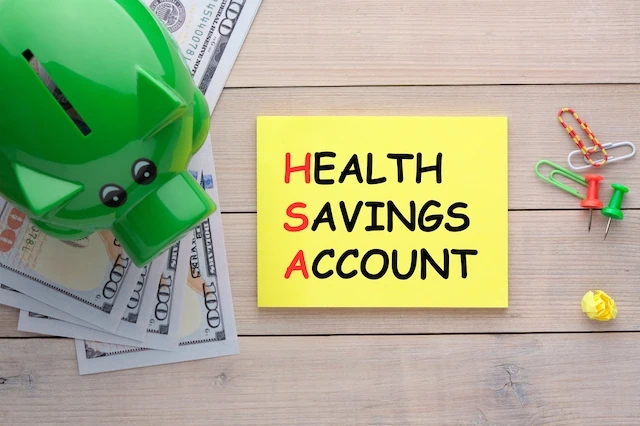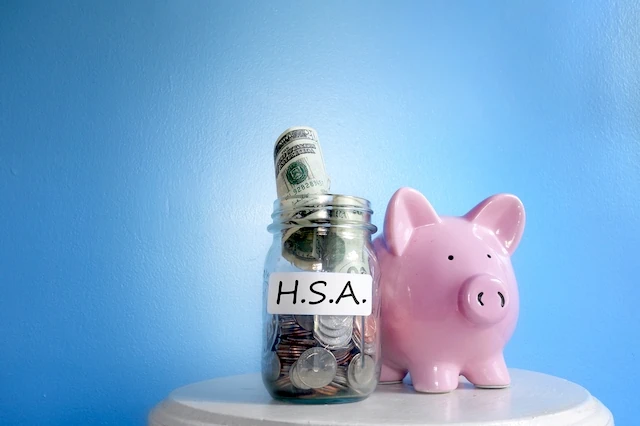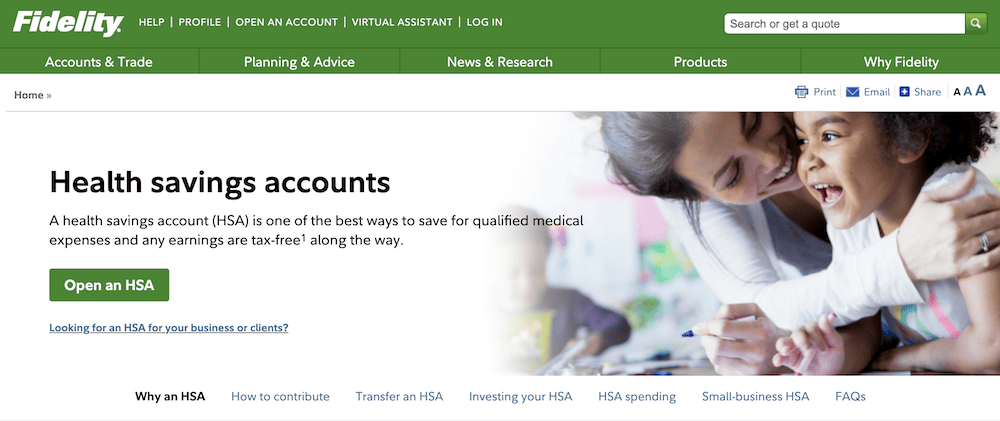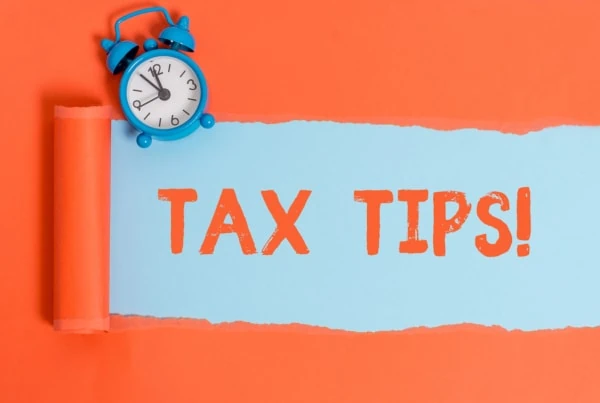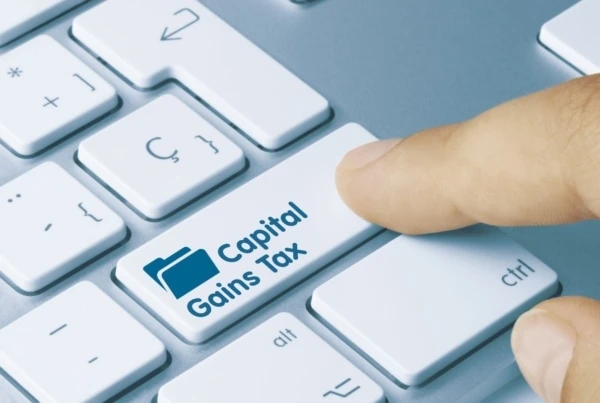American healthcare costs per capita have risen tremendously in the past 20 years and stand at the highest in the developed world. Despite this, there’s little to show for it in terms of comparable quality of care when you look at our Organization for Economic Cooperation and Development peers (OECD, for short—essentially a who’s who group for rich countries).
Despite our lagging healthcare quality, many individuals and employers still seek to reduce their costs for care and look for health insurance to cover themselves or their employees, respectively. Quite often, these health benefits include access to a high deductible health plan and possibly use of an HSA, or a health savings account.
These accounts have become increasingly popular in the past 15 years as many people seek to control their healthcare expenses by enrolling in qualifying high deductible health plans (HDHPs) to take advantage of their low-cost nature.
However, the question needs to be asked of whether these HDHPs and HSA plans make sense for everyone hoping to save on medical costs and tuck away money in an HSA.
This article examines HSA plans, the HDHPs needed to qualify for them, and the conditions one should consider before pursuing this option.
Featured Financial Products
Related: Best HSA Providers
What Is a Health Savings Account?
Health Savings Accounts (HSAs) are tax-advantaged medical savings accounts available to people enrolled in high-deductible health plans who meet certain criteria. The accounts first appeared in 2003 and were championed by the Bush Administration.
HSAs, used in conjunction with HDHPs, are part of a group of health insurance products commonly referred to as “consumer-driven health plans” or (CDHPs). These pairings are designed to increase the sensitivity of individual consumers to the costs of medical services and take actions to save money.
The HDHP and HSA insurance combination allows individuals and/or their employers to make tax-advantaged contributions toward medical care not covered by HDHPs.
Related: How to Use Your HSA for Retirement
Who Qualifies for a Health Savings Account?
Not everyone qualifies for these accounts—certain criteria must be met. For example, if you have one of those “Cadillac health plans” villainized during the Affordable Care Act (ACA) debate and pay a lower deductible or no deductible at all, you are not eligible for an HSA.
Or, if you buy an HDHP from the Healthcare.gov marketplace, be sure to check whether it is HSA eligible. The insurance plan must specifically state it allows access to an HSA (usually referenced in the plan’s name on the marketplace). Don’t buy any HDHP thinking it will automatically qualify for HSA eligibility.
HSA rules require the account holder to have an HDHP either through their employer or their own policy to make contributions. If an individual contributed funds in the past when they were eligible but no longer qualify, they may still use the funds to cover HSA eligible expenses.
Beyond just having an HSA, there are additional requirements to meet. As stated above, not any HDHP will do. For 2025, the requirements for establishing or having access to a health savings account are:
- Insured (that’s you) must be covered by a HDHP
- HDHP minimum deductible for self-only coverage is $1,650 and $3,300 for family coverage ($1,700 and $3,400, respectively, for 2026)
- HDHP out-of-pocket maximum for self-only coverage is $8,300 and $16,600 for family coverage ($8,500 and $17,000, respectively, for 2026)
- HDHP coverage can be a traditional medical plan so long as the plan doesn’t cover the first dollar of medical expenses (except preventative care)
- Cannot have coverage by other comprehensive medical plan, nor enrollment in Medicare (HSA may be maintained after receiving coverage by Medicare but contributions cease)
Featured Financial Products
Related: HSA Rollover: How to Transfer HSA Funds to a New Provider
What Are the Annual HSA Contribution Limits for 2025 + 2026?
Each year, the IRS sets annual contribution limits for HSAs which determine how much you are eligible to contribute to your account. These limits depend on whether you have HDHP coverage just for yourself or coverage for family members, too.
The good news is the HSA limits are adjusted each year to account for inflation. As a result, the self-only HSA contribution limit is $4,300 for 2025, but it increases to $4,400 for 2026.
Likewise, if you have family coverage, the 2025 health savings account contribution limit is $8,550, while the limit jumps to $8,750 for 2026.
When making these contributions, they can be done as a lump sum or multiple times throughout the year. Further, if you are 55 or older, you may contribute an additional $1,000 per year as a catch-up contribution.
With regards to the treatment of HSA employer contributions, unlike 401(k) plan employer contributions, these contributions count toward the annual contribution limits. If you a wage and salary employee and receive a Form W-2, you will find your employer contributions in Box 12 with a Code W.
Related: HSA vs. HRA: How Different Are They?
HSA vs FSA
When comparing the HSA vs FSA, the former brings the added component of being an investment vehicle for building wealth. The latter is only useful if paying for FSA eligible expenses in the contribution year.
Otherwise, you typically lose the unused funds contributed to the FSA account. This feature earned this account the “use it or lose it” description, though some FSAs allow for a limited amount of carryover from year to year (up to $660 in 2025).
Both accounts can be used to cover qualified healthcare expenses, however, consumers using the health savings account can have their balances build over time, accumulating resources for future medical needs. Funds contributed to HSAs are owned by the individual, similar to an Individual Retirement Account (IRA). After all, if you contributed funds to the account, shouldn’t you be allowed to keep them?
Further, because the money set aside in these HSA plans automatically roll over year after year, the money in your HSA can be invested and earn compounded gains tax-free. Check your HSA plan to be sure you have access to low-cost investment options which track the broader market. If so, investing through an HSA is one of the best investments for young adults, hands down.
As a note, not all states extend the same tax-advantaged status for these accounts and you should be aware of this before pursuing the HDHP and HSA insurance combination. Check with the state tax agency where you live to see if your state provides tax-advantaged treatment to HSAs.
Related: States That Tax Social Security Benefits
Why Is a Health Savings Account Important?
A health savings account offers triple tax savings and can be extremely beneficial to individuals enrolled in HDHPs. The funds kept in these accounts can defray the costs of HSA eligible expenses which fall outside the health insurance coverage.
These funds are contributed either as a payroll deduction directly from your paycheck or through a deposit made into the account. If the contribution goes into your HSA by a payroll deduction, it is not subject to FICA taxes, which are the federal payroll taxes that fund Social Security and Medicare (FICA is short for the Federal Insurance Contributions Act). Depending on your income level, this gives you an extra 7.65% toward your HSA (6.2% for Social Security and 1.45% for Medicare).
Depending on your health savings account plan, there might also be options available for you to invest any HSA funds not used to pay medical expenses. For example, my current HSA provider offers savings and investment options to consider with the regular contributions I make each pay check.
Currently, I split my contributions 80% toward a low-cost S&P 500 index mutual fund available through the plan and 20% towards a high-interest savings instrument in the event I need immediate access to the funds. There is a minimum balance of $1,000 required for my account to be eligible for investing. Most accounts have a minimum balance requirement to access the available investing options.
The key to remember when considering investing your HSA funds is to find an HSA plan which provides investing options where the first dollar invested goes into low-cost, diversified investments in reputable funds.
Be sure to avoid companies which require minimum balances for investing or charge large fees relative to your balance.
Where Can I Open a Health Savings Account?
If you want to invest your HSA balance (recommended), our top pick is Fidelity because the company offers the best options for self-directed investors. Here are some details about Fidelity’s HSA offerings.
Fidelity HSA
- Available: Sign up here
- Debit card: Yes
- Insured: Yes (Uninvested cash is insured)
- Minimum balance: $0
- Minimum to invest: $0 for Fidelity HSA, $10 for Fidelity Go HSA
- Investment options: Stocks, bonds, mutual funds, ETFs (investments depend on account type)
Fidelity offers two options for HSA accounts: the Fidelity HSA or the Fidelity Go HSA.
The self-directed Fidelity HSA is best for people who prefer to handle their own investments. With this account, you can invest in stocks, bonds, mutual funds, and exchange-traded funds (ETFs). It’s also a rarity in that it allows you to buy fractional shares of stock. You’ll also benefit from commission-free trades, minimal fees, and no account minimums. This HSA account also comes with a debit card that you can use for qualifying healthcare expenses.
These features make the Fidelity HSA a good option for those seeking the flexibility of a self-directed account, as well as individuals or families who might not have a ton of extra cash to set aside for healthcare expenses.
People seeking a managed account could opt instead for Fidelity Go HSA, a robo-advised HSA solution. Answer just a few questions, and Fidelity Go will build a portfolio for you. Funds in a Fidelity Go account are invested in Fidelity Flex mutual funds, which feature no management fees and often no fund expenses.
- Maintenance/other recurring fees: None
- Investment fees: Fidelity HSA: No fees. Fidelity Go HSA: No advisory fees for balances under $10,000; $3/mo. for a balance of $10,000-$49,999, 0.35%/yr. for balances of $50,000 and above.
- Minimum balance to invest: Fidelity HSA: $0. Fidelity Go HSA: $10.
- Investment options: Fidelity HSA: Stocks, bonds, ETFs, mutual funds. Fidelity Go HSA: Fee-free Fidelity Flex mutual funds.
- Maximum investment flexibility via self-directed Fidelity HSA accounts
- Low/no minimum to invest depending on type of account
- No fees for Fidelity HSA
- No fees on low- to mid-balance accounts for Fidelity Go HSA
- Can buy fractional shares
- Mobile app
- Bill pay
- FDIC-insured cash accounts
- SIPC-insured investment accounts
- Regressive fee structure for managed Fidelity Go HSA investment accounts
Related: Capital Gains Tax: What Is It, Rates, Home Sales + More
What Is a High Deductible Health Plan?
These health plans offer significantly lower premiums than their low-deductible health plan counterpart as a result of two primary cost-saving techniques.
First, high deductible health plans cover fewer of the dollars spent on healthcare than a low-deductible health plan. Because less coverage is offered under HDHPs, it encourages customers to shop around for the best price they can find on health care services.
By making the insured responsible for medical costs upfront, there is a greater incentive to save money on uncovered expenses.
Under HDHPs, you cover all out-of-pocket expenses until you’ve reached your policy deductible. From there, you are still partly responsible to pay your coinsurance portion until you’ve reached your out-of-pocket maximum. At this point, the insurer covers any costs above this maximum.
For reference, coinsurance is the percentage of costs of a covered healthcare service you pay (20%, for example) after you’ve paid your deductible. Your insurer picks up the difference.
The second cost-saving technique is these plans tend to attract healthier, and therefore less costly, individuals. These individuals would likely be capable of handling and recovering from a short bout of illness because their overall health is greater than the population seeking healthcare more frequently.
The logic behind having the insured cover the initial costs up to the annual deductible is if you do a little more work to find the most cost-effective treatment, you could end up saving money. It also encourages the insured not to spend money.
Featured Financial Products
Related: 30 Tax Statistics and Facts That Might Surprise You
Should You Pick a High Deductible Health Plan?
As mentioned earlier, high deductible health plans tend to save consumers more money despite having greater out-of-pocket costs. When you are making the decision of whether to enroll in a HDHP to gain access to an HSA, make the following considerations first:
- Are you someone less likely to get sick or injured? Are you a generally healthy person?
- Are you able to afford your full deductible either through your health savings account or your own after-tax funds? Or will you be forced to take on debt to pay your medical expenses?
- Worse: can you afford the out-of-pocket maximum each year?
- Do you want to find another financial way to support your retirement?
- Can you make regular contributions to your HSA?
If you enroll in the HDHP because you can’t afford higher monthly premiums under the low deductible health plan, how do you then make significant HSA contributions? Clearly, in this case, it makes no sense to enroll in an HDHP for the HSA benefits if you can’t take advantage of them.
However, if you chose an HDHP to save money and have coverage against infrequent but major medical expenses, serious illness or surgery, it still makes sense.
Who Should Get a Low or No-Deductible Health Plan?
Low deductible health plans are great for their predictability. The regular monthly premiums can fit neatly into your personal budget while you have a lower threshold to begin receiving coverage benefits. Some questions to answer when deciding if a low deductible health plan is right for you:
- Do you have on-going medical treatment from a chronic condition?
- Do you take expensive prescription medications? Or maybe just one really expensive drug?
- Are you expecting the birth of a child? A lot of medical care comes with pregnancy.
- Do you or your family participate in any risky activities that might make you more susceptible to needing medical treatment?
Your best choice is likely the plan which allows you to answer “yes” to more of the above questions.
When Deprivation Leads to Bad Outcomes
Many espouse the value of HDHPs and HSAs because they’re great mechanisms for saving money. However, this is only the case if it makes sense for your situation.
According to the Urban Institute, high deductible health plans tend to reduce costs; however, for the wrong reasons. Instead of having better health outcomes, most people on high deductible health plans skip out on care altogether as opposed to finding the lowest cost.
On the one hand, low deductible health plans come with lower deductibles and higher premiums. These plans are great because they come with predictable costs and more favorable coverage because of lower out-of-pocket limits.
On the other, high deductible health plan premiums are low or non-existent. They also can come saddled with an HSA plan useful for claiming HSA deductions on your tax return and earning compounding returns.
Currently, my wife and I are what the health insurance industry calls “invincibles.” We’re young folks and do not need regular medical care outside of wellness checks. Therefore, we choose to have separate HDHPs to avoid paying premiums on our insurance.
If we went on either employer’s family HDHP, we’d have to pay nearly $300 per month in premiums. Right now, we pay none under separate plans.
We’re choosing to continue together—separately. We will contribute to my HSA until the time comes where the math makes more sense to switch to a low-deductible plan.
While HSAs can offer wonderful benefits for saving tax-advantaged investments toward HSA eligible expenses, we know there is a trade-off we’re facing. Pay no premiums and have access to an HSA at the risk of facing higher out-of-pocket expenses.
For now, this arrangement makes the most sense for our situation. Does it make sense for you?




